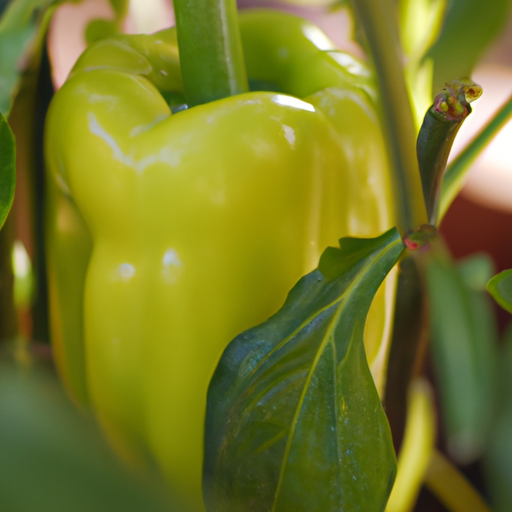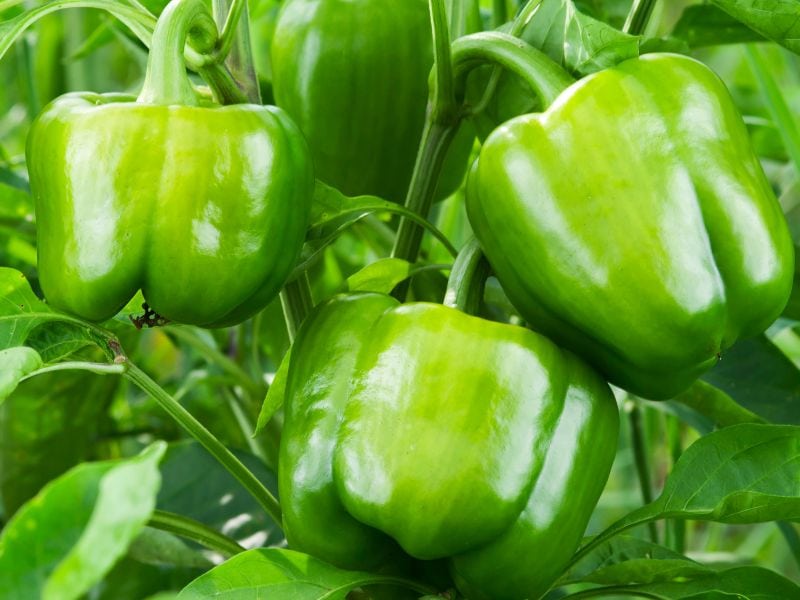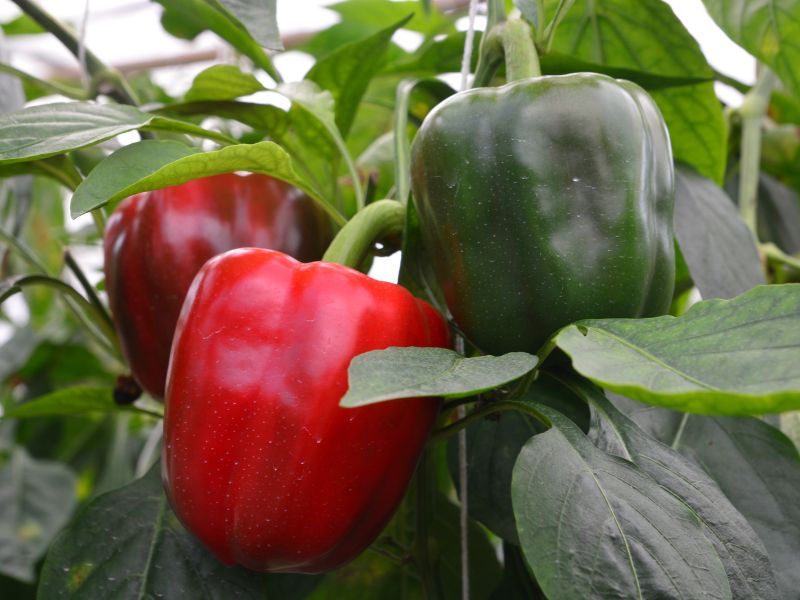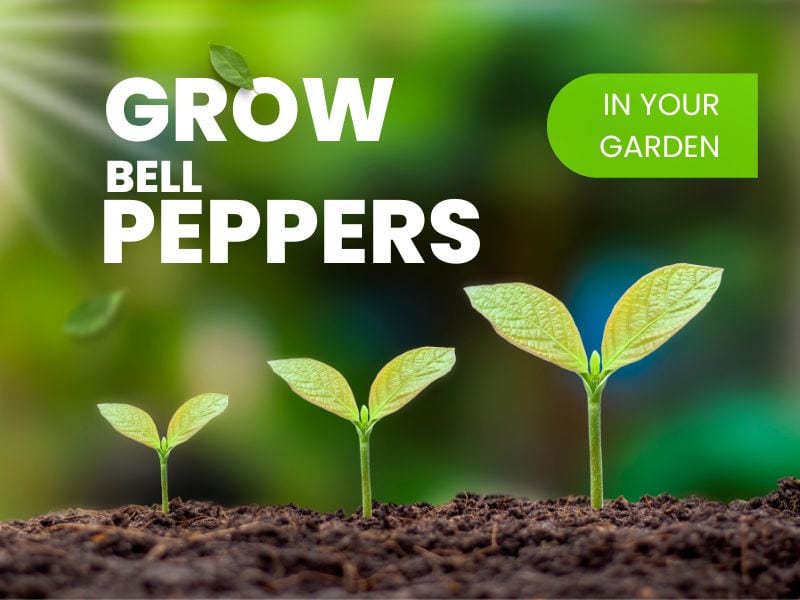Table of Contents
How to Plant Bell Peppers for Maximum Yield

Are you wondering just how to grow bell peppers at home in your garden this summer? You’ve come to the right place! Growing bell peppers can be a rewarding experience, and with a few simple tips we’ll cover below, you can maximize your yield. Here’s how to plant bell peppers for maximum yield:
1. Choose the right variety. Different varieties of bell peppers have different growing requirements, so make sure you choose one that is suitable for your climate.
2. Plant in the right location. Bell peppers need plenty of sunlight, so make sure you choose a spot that gets at least 6-8 hours of direct sunlight each day.
3. Plant at the right time. Bell peppers should be planted in the spring, after the last frost has passed.
4. Plant in well-draining soil. Bell peppers need soil that is rich in organic matter and drains well.
5. Space your plants properly. Bell peppers need plenty of room to grow, so make sure you space them at least 18 inches apart.
6. Water regularly. Bell peppers need to be kept consistently moist, so make sure you water them regularly.
7. Fertilize. Bell peppers need to be fertilized every few weeks to ensure they get the nutrients they need to grow.
8. Prune. Pruning your bell peppers can help them produce more fruit and keep them healthy.
By following these simple tips, you can ensure that your bell peppers will produce a maximum yield. Next up let’s take a look at container gardening:
Tips for Growing Bell Peppers in Containers
Growing bell peppers in containers is a great way to enjoy the delicious taste of homegrown peppers without taking up too much space. You can grow them on an apartment balcony or just about anywhere that gets enough direct sunlight. Here are some tips to help you get started:
1. Choose the right container. Bell peppers need a container that is at least 12 inches deep and 12 inches wide. Make sure the container has drainage holes in the bottom.
2. Use the right soil. Peppers need soil that is light and well-draining. A good mix is one part potting soil, one part compost, and one part perlite or vermiculite.
3. Plant in full sun. Bell peppers need at least 6 hours of direct sunlight each day.
4. Water regularly. Peppers need to be kept evenly moist, but not soggy. Water when the top inch of soil is dry.
5. Fertilize. Feed your peppers with a balanced fertilizer every two weeks.
6. Support your peppers. As the peppers grow, they may need to be supported with a stake or cage.
7. Harvest when ripe. Bell peppers are ready to harvest when they are firm and brightly colored.
With a little bit of care, even those of you living in the city can enjoy the delicious taste of homegrown bell peppers right from your own container garden!

The Benefits of Companion Planting with Bell Peppers
Companion planting with bell peppers is a great way to maximize the health and productivity of your garden. Not only does it help to keep pests away, but it also helps to improve the flavor of your peppers. Here are some of the benefits of companion planting with bell peppers:
1. Improved Flavor: When you plant companion plants near bell peppers, the flavor of the peppers can be enhanced. For example, planting basil near bell peppers can give them a sweeter, more intense flavor.
2. Pest Control: Planting companion plants near bell peppers can help to keep pests away. For example, planting marigolds near bell peppers can help to repel aphids and other pests.
3. Improved Soil Quality: Companion planting can help to improve the soil quality in your garden. For example, planting legumes near bell peppers can help to add nitrogen to the soil, which can help to improve the health of your plants.
4. Increased Yields: Companion planting can help to increase the yields of your bell peppers. For example, planting nasturtiums near bell peppers can help to attract beneficial insects that can help to pollinate the plants and increase yields.
Overall, companion planting with bell peppers can be a great way to maximize the health and productivity of your garden. Not only can it help to improve the flavor of your peppers, but it can also help to keep pests away and improve the soil quality. So, if you’re looking for a way to get the most out of your garden, consider companion planting with bell peppers!

How to Identify and Treat Common Diseases of Bell Peppers
Bell peppers are a popular vegetable that can be found in many dishes. Unfortunately, they can also be susceptible to a variety of diseases in the garden. Knowing how to identify and treat these diseases can help you keep your bell peppers healthy and productive all summer long.
The most common diseases of bell peppers are bacterial leaf spot, anthracnose, and powdery mildew. Bacterial leaf spot is caused by a bacteria called Xanthomonas campestris. Symptoms include small, dark spots on the leaves and stems of the plant. The spots may have a yellow halo around them. To treat bacterial leaf spot, remove any infected leaves and dispose of them away from the garden. You can also spray the plant with a copper-based fungicide.
Anthracnose is caused by the fungus Colletotrichum coccodes. Symptoms include dark, sunken spots on the leaves and stems of the plant. To treat anthracnose, remove any infected leaves and dispose of them away from the garden. You can also spray the plant with a fungicide containing mancozeb or chlorothalonil.
Powdery mildew is caused by the fungus Erysiphe polygoni. Symptoms include white, powdery spots on the leaves and stems of the plant. To treat powdery mildew, remove any infected leaves and dispose of them away from the garden. You can also spray the plant with a fungicide containing sulfur or potassium bicarbonate.
By knowing how to identify and treat the common diseases of bell peppers, you can keep your plants healthy and productive. If you have any questions or concerns, be sure to contact your local extension office for more information. Did you enjoy this article? Check out our blog for more plant care tips for your garden.


